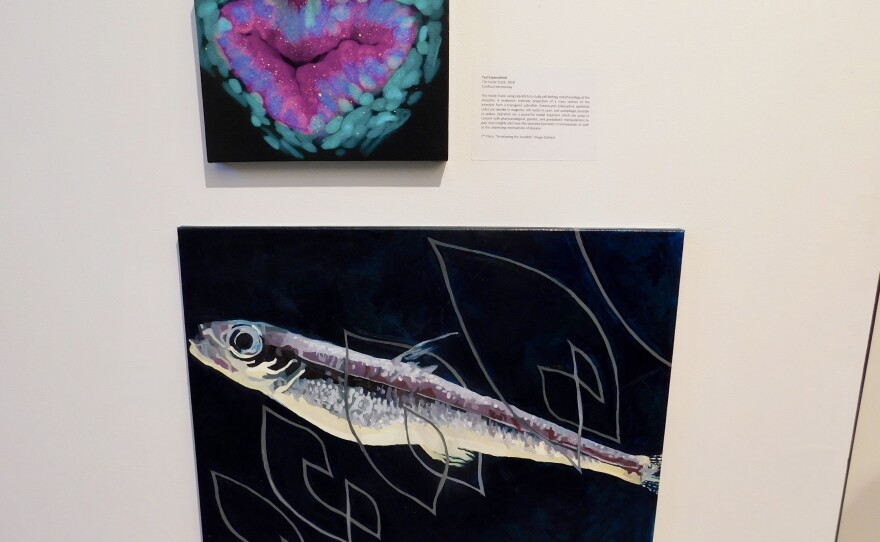Popular stereotypes of artists and scientists are starkly different. While the scientist is brainy, analytical and often donning a white lab coat, the artist is inexact, eccentric, and creative. But the overlap between these two disciplines is far greater than what stereotypes may lead people to believe. A new exhibit on view at the Duke Rubenstein Arts Center explores the intersection of art and science and what happens when the two are in conversation with one another.
“The Art of a Scientist,” features work by 22 scientists with visual responses by local artists. The scientists’ works include photographs, micrographs, botanical prints, watercolors, and two videos.
Host Frank Stasio talks to two of the creators and organizers of the exhibit: Duke graduate students Casey Lindberg and Ariana Eily. Lindberg is a doctoral candidate in toxicology, and Eily is a doctoral candidate in biology.
Molly Cassidy also joins the conversation to share her experience as a participant in the project. Cassidy is a mixed media artist based in Raleigh. Her work is based on an electrocardiogram. Her artistic response is a representation of the original image in gold.
“The Art of a Scientist” is on display at the Rubenstein Arts Center at Duke University until Friday, August 10th.

Interview Highlights
Cassidy on the inspiration she found in the image of an electrocardiogram, which detects signs of heart disease:
The direction that it took me in was very esoteric or existential, because the notion that you are sitting on this machine and having this read and knowing that it could be a very significant event ... That's something that I have personally experienced in my own life in the last couple of years, so it's very very close to me, and it brings a lot of things into perspective.
Eily on what she learned from highlighting the similarities between art and science:
The largest takeaway ... Is that really the barriers that get put up between the two are entirely arbitrary. And that a lot of the artists and scientists that we've talked to and connected with... They're so much the same. And the thought processes behind what we do is so much the same. And it's just a means of how as people and as a society we decide to weigh the two that makes people perceive it differently.
Lindberg on what surprised her about putting together this exhibition:
I had no idea how easy it would be to get these two groups of people together. It just flowed. Their own communication flowed so well, and I think you can hear that not just with Molly and John and their conversations, but across the board. Because even I'm a scientist, and I still had stereotypes in my head of how these interactions would occur.





